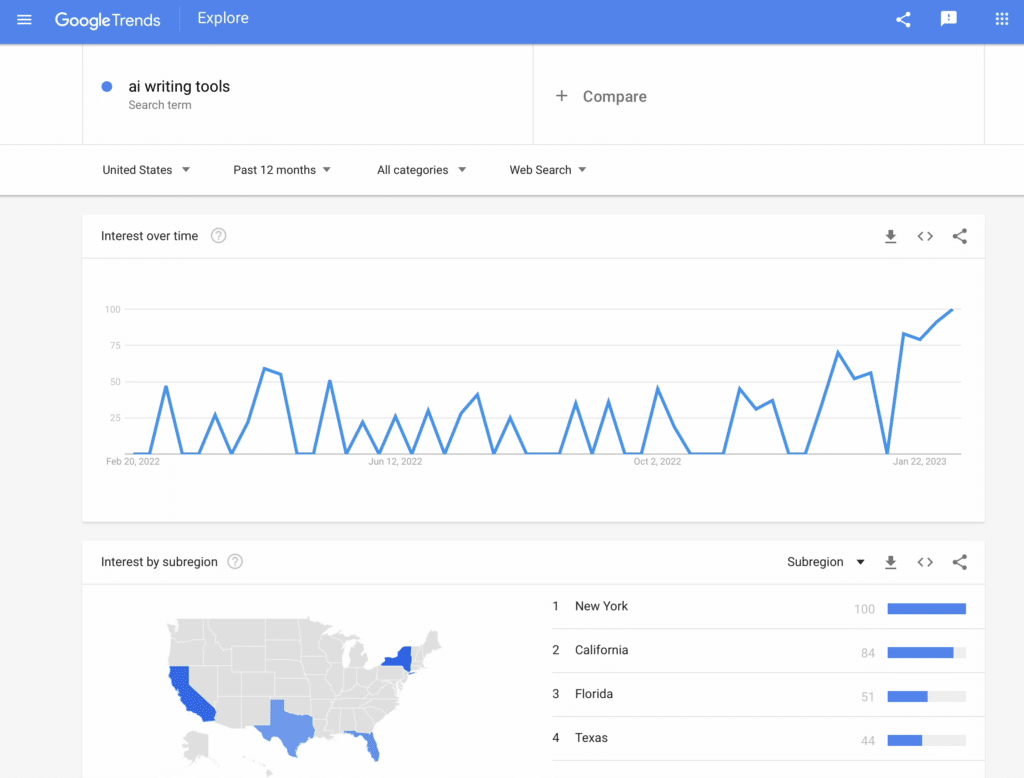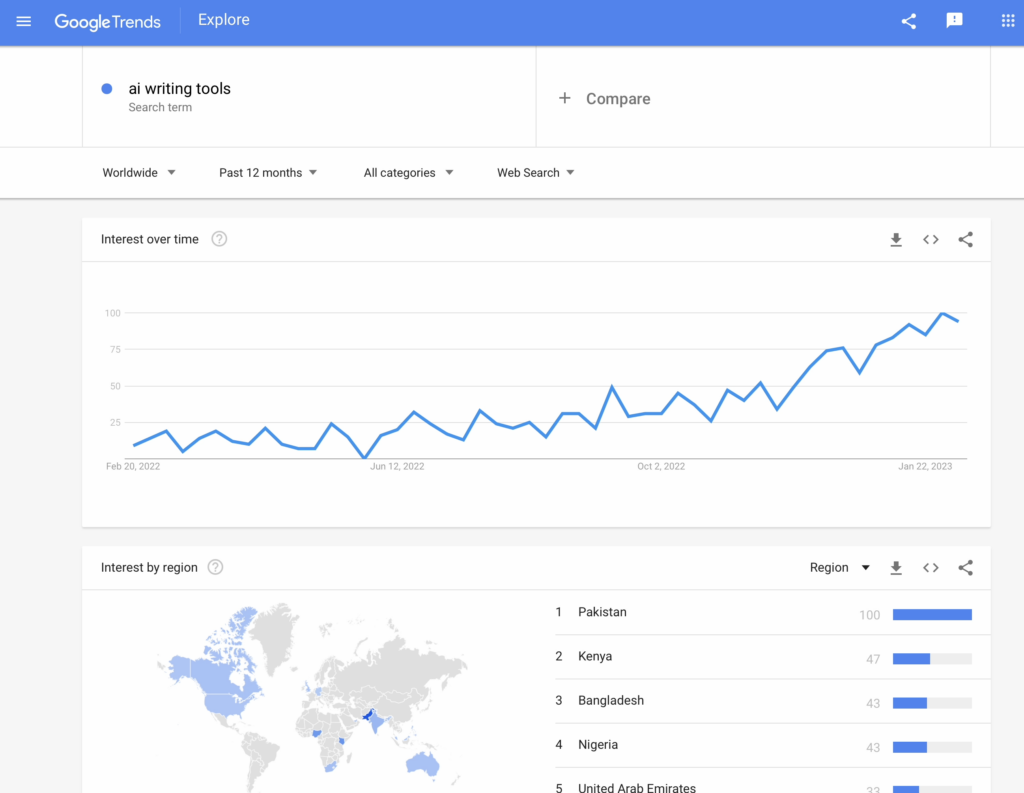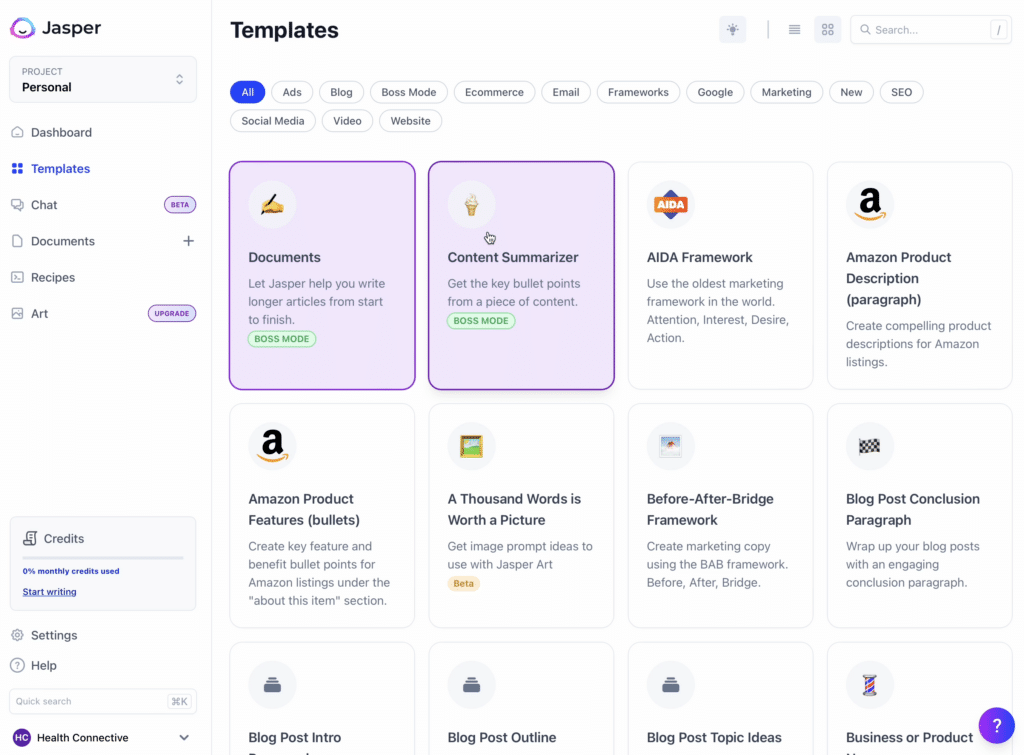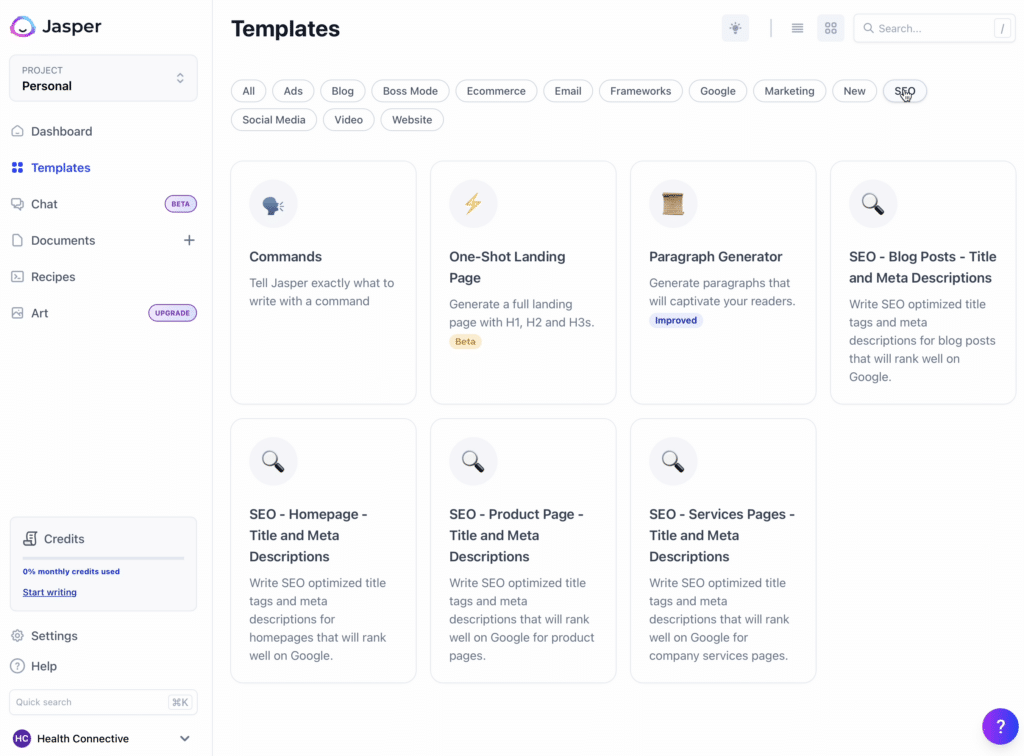When we look back at all the technological innovations that have come up in our marketing tools, it’s easy to see where we’ve put a barrier between us and the people we mean to help.
- Chatbots that frustrate as often as they help.
- Advertising targeting that’s become too invasive.
- Automated messaging from CRMs that can overstuff people’s inboxes.
This isn’t just a problem with how we interact with our audience and our customers. We create the same issues internally.
Our marketing reports can easily become fact-filled collections of nonsense. We have loads of metrics, but we’re short on insight.
This is what happens when we overuse tech without focusing on how we can keep the human touch.
Now enters AI tools, and we have the chance once again to consider how we can either be more human or more alienating in our work.
One option is to completely refuse all of these tools. It would be the equivalent of hand-making crafts and selling them on Etsy (even though that’s a pretty powerful technological tool). Still, we could deliver amazing standalone experiences for a very small crowd.
The problem is that our businesses are not set up to only serve a small audience. The goal is to reach a larger group and to do it quickly and efficiently.
Another option is to take a “set it and forget it” approach, but we already talked about how problematic that is.
What’s in between?
Let’s look at how we can use tools already at our disposal, along with some tools that may be new.
The foremost goal with this exercise is to consider how your organization can stay human, at scale. Meaning, here’s how to be attentive and responsive to people’s needs while still moving quickly.
Talk about Something Your Audience Wants to Hear
If you were at a cocktail party or a meet-and-greet function, you would hopefully listen first. You wouldn’t start by blurting out whatever it is that you want to sell. You’d read the room. You would take some time to think about how you can be a part of this conversation. Then, you would talk.
Enter audience research, your necessary tactic to read the room.
On the simple side of things, we can start off with Google Trends.
Google Trends is a very well-known tool that’s been out for a long time now. You’ve likely used it before.
One of the things that we can look at when it comes to content writing is understanding broad trends in people’s interest on various topics.
In the spirit of looking at how new tools are impacting our work, let’s look at the term “ai writing tools.” You can see that we’ve had several blips of interest in the United States over the past year, followed by a steady incline since the beginning of 2023.

Now, take a look at the interest on a worldwide scale. This topic is drastically increasing in importance.

Regardless of whether massive interest in AI writing is good or bad, we can understand how much people are looking for this information. People care, and they want to learn more.
I confess that I don’t go through Google Trends with every single article that I write. Still, it’s an easy way to keep track of others’ interests.
Taking a step up from Trends, we could use something like Sparktoro to identify an audience and understand what they’re talking about online. This lets us start with the audience itself instead of just starting with topics. We can keep up to date with shifting priorities within an intended audience.
Direct Feedback from Your Community
Taking a quick sidestep from the various tools you can use out there, don’t forget the power of developing your own community.
Whether you’re talking to healthcare professionals or consumers / patients, a community offers you the chance to see which conversations are already creating the most engagement. It’s likely the rest of your potential audience would be interested, too.
You can also run surveys and post questions within your community to give people the opportunity to respond.
How Can We Use AI in the Process?
When it comes to audience research, there’s so much out there about quantitative research versus qualitative research already. You need both if you’re going to understand your audience.
You need to be able to make sure that you’re incorporating enough opinions in your research to get over your own bias on a topic.
In the Rise community, Mark Schaefer talked about how he was able to take a large number of individual survey responses and run them through something like chat GPT to get a summarized view of what all of these people had say. With a tool like this, you can get this kind of condensed view very quickly. That would have been hours of research to go through and to have to read every single one of those responses.
In addition to just getting a summary of responses, you can also use some AI writing tools to help with sentiment analysis.
Sure. You’ll still going to need to go back through some of that qualitative research in more detail later. It doesn’t completely remove all work that you could possibly have to do.
Right now, an AI tool isn’t going to be trained up on all the specifics of your business, so you’ll need to do some interpreting of the information.
Still, you can see where parts of your survey process can move much more quickly. You can connect to your audience’s emotions more efficiently.
Writing with AI
AI writing is certainly having its ups and downs. CNET jumped in with both feet on AI writing, and then had to double back to correct multiple articles after being called out on the matter.
There was supposed to be human review on every article, but the result was still a mess.
So, let’s talk about some safer ways to start reaping some of the benefits of AI writing while not losing your brand voice.
We’re using Jasper AI to see what’s possible. I like how Jasper has specifically developed different templates for marketers to use. This gives a clear entry point on how to interact with these kinds of tools in order to get useful output.

I’m using Jasper for things like title tags, meta descriptions, social media posts, and small bits of advertising copy.
I can generate a dozen or so options of something like a title tag, using different styles and voices. Most of the time, I’m not using any of the generated text verbatim, but this tool is giving me a lot of good ideas.
It’s helping me rapidly go through the different ways that I could be human with the content by making me think about what emotion I’m trying to get across and what promise I’m trying to make with the content that we had written.

AI tools are helping me through some of tedious work, as well. For example, I use Temi to get a transcript of our video content and then run it through something like Jasper AI to put together a YouTube description.
Again, I’m not outsourcing my complete article or video, but I’m getting help with reformatting content in multiple ways. This allows me to speed up the process so I can focus on making sure I’m getting the right message out in the first place.
You don’t have to cede all control of your writing process to make use of available tools. You can still have a factual, contained product description or article in a faster way.
Still Differentiated
One last note…
As you adopt new tools, don’t forget the opportunity to differentiate. We don’t want to say things in the same voice time and again. Worse, we don’t want to echo all the other companies out there with the same copy and paste answer from any of these AI tools.
I’ve seen some tools making the promise that they can help incorporate a brand voice by analyzing available content and including it into any future AI-generated writing in your account. This is a great start.
With you as the guide and the editor for future content, you can use these tools to create in an all-new way.
One of the ways I’ve been thinking about using these tools is that it’s like having a junior writer on staff or a new outsourced writer. You’re going to pay a lot of attention to the writing as you’re trying to teach this “person” the ins and outs of your business. You want to correct frequently and look for the spots where your new writer seems to excel.
As you find these opportunities, it becomes easier to trust your writer with assignments, knowing that you have a better idea of what outcome to expect.
Additional Resources
There are tons of great articles and posts out there right now about AI writing. Here are a few relevant links:
- How Artificial Intelligence Will Continue To Impact The Marketing Industry
- Beyond the Basics: 20 Non-Obvious Uses of ChatGPT for Marketing
- ChatGPT for SEO landing pages (LinkedIn post)
I really encourage you to play around with these new tools. At the same time, I don’t want you to completely miss everything that these tools can do because you don’t want to go all in.
With any new marketing technology, you need to test and adapt. You want to review how your intended audience is responding to the new tech. This will be a continued effort of adjusting and listening as the technology and your audience evolves.
Michael spends a great deal of time with the healthcare industry both professionally and personally, which gives him the perspective of what stakeholders on either side of the care equation need.
He began coding in 2008 and subsequently shifted his attention entirely to online marketing. Michael completed his MBA in 2018, focusing on the intersection of healthcare and marketing.

